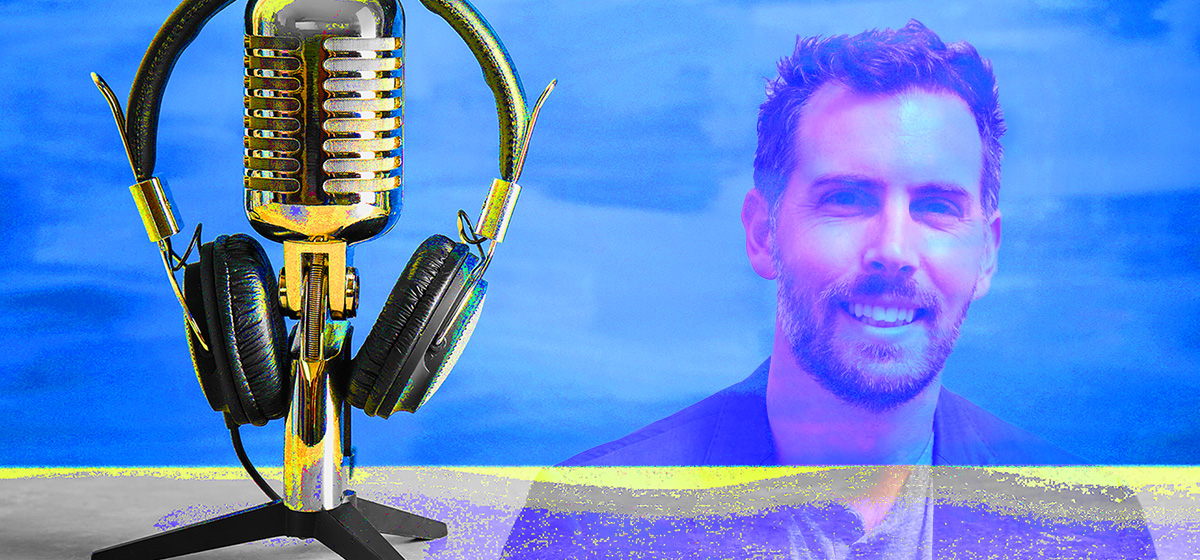Moving Through Pittsburgh

Donald Bonk interviews Chris Watts, vice president of mobility of Pittsburgh Downtown Partnership, as part of the Pittsburgh Tomorrow podcast series. This interview was conducted before COVID-19. The transcript is abridged and edited for clarity.
View the episode archive here. View Chris Watts’ profile here.“Working closer as a unit can help us propel forward. The voices of the 2.3 million folks that represent this metro area and care about what happens in the city of Pittsburgh are really important.” —Chris Watts, vice president of mobility of Pittsburgh Downtown Partnership
Donald Bonk: Can you briefly give us your background and what you do here at the partnership?
Chris Watts: I grew up in Shaler Township, went to Carnegie Mellon University for my undergraduate and, like many, moved away for about 10 years to explore professional opportunities but was drawn back by the momentum and progress that I had been reading and hearing about and that friends and family were telling me about. I’ve been serving as the vice president here at the PDP for the last two years.
Bonk: What do you think would make Pittsburgh the best city in the world or one of the best cities in the world?
Watts: I think we already are there. It’s a great place to be. We love being in the neighborhoods. We love this small town charm with the big city opportunities and the neighborhoods that make up the city and really, the broader region.
We need to make sure that whatever we’re doing, we’re thinking about investing in communities and what makes communities great—the amenities, the simple things. That doesn’t have to be large-scale, long-term projects, but making sure the little things are done right and thinking through how we can connect neighborhoods.
Bonk: When you say some of the little things, can you give us a couple of examples of your thoughts?
Watts: Pittsburgh is place where it’s easy to walk to communities and get to each other in each other’s neighborhoods. The walkability and experience as a pedestrian, seeing other people and connecting with your neighbors, is really important to build and strengthen communities.
As transportation habits changed and resources became slim, a lot of neighborhoods aren’t as walkable as they could be or should be. That’s what we love about downtown. Recent surveys we’ve done at the PDP have proven that people love to be in interesting places with interesting people. Some communities around the region may have interesting people there and interesting things to look at, but it’s not safe to walk. It’s not comfortable there. And you lose the connection to that place.
Bonk: Have there been any other cities that you’ve been to or seen where there are ideas that you would like to import into Pittsburgh? Things that would take us to the next level?
Watts: I lived in Washington, D.C. for about 10 years. The sidewalks are huge; the streetscape is beautiful. It has the big-time town feel, but it has the small town charm in terms of streetscape amenities. Simple things like planters and street lights and different mobility options that, of course, we have in certain neighborhoods, but not at the scale that Washington has.
Here, you look at the North Shore and the South Shore and Station Square and the Strip District and what’s emerging in uptown and the new 28 acres development—that has all of the bones to be an incredible walkable core. But right now, there are limiting factors of connections in those neighborhoods that don’t make it comfortable for everyone. It’s an opportunity for us to really think through how we make this great place even better.
Bonk: If you could do one amazing, transformative thing and blank sheet of paper, no speed bumps or barriers. What would be the moonshot idea, the total game-changer for Pittsburgh?
Watts: One of the things I’ve been struck by recently at the PDP is that the majority of visitors to downtown aren’t from the city of Pittsburgh; they’re from the broader county. Pittsburgh is one of the smallest of the top 50 metro areas in the country in terms of square miles. But when you think about the region at large, we’re competitive with some of the larger regions in the country. But unfortunately, our decisions aren’t necessarily made all the time as a city, versus county, and regional perspective.
Working closer as a unit can help us propel forward. The voices of the 2.3 million folks that represent this metro area and care about what happens in the city of Pittsburgh are really important.
I would want to push our civic leaders to look at some common ideas that can bring us together, like public transportation and shared amenities, that require large scale funding and tradeoffs of opportunity but also provide long term future growth. It’s not easy and requires strong leadership and a commitment to big change versus sometimes opposition. But if our political leaders and our civic leaders are committed to a long term vision, then you’re going to have to actively articulate to the communities across the region why different investments are important.
That’s a commitment of our leaders to be able to articulate effectively to folks that may not go downtown every day but utilize it for some of the amenities and entertainment options.
Bonk: Whether it is a trip to see Bricolage (theater) or a Pirates game or Steelers game.
Watts: A vital downtown is the beacon of what people look at as the city of Pittsburgh: a beautiful skyline, the amenities, the vibrancy. That has to come from a regional commitment, which is hard to organize. But I think we have the bones to get that done and we have leaders that can step up to get that done.
Bonk: So, it requires a broader narrative about what Pittsburgh is
Watts: Totally. Look at the history of how things got done in Pittsburgh. When decisions were made to clean our air and water, that was a hard political decision. But we had committed leaders that were willing to work through differences to make those big changes and those were changes that required huge external investment.
Right now, politics are challenging and people sometimes lean on their differences. It’s going to take collaboration and communication among our leaders, both in the private and public sectors, to chart this path forward and make significant progress for a common future for the region. Some of that common future may get pushback from citizens or folks who are engaged, but that commitment to what that future is, from leadership, is vital.
Bonk: If you were mayor, county executive, or in a position of authority, what are three practical things that you think might be transformational or help Pittsburgh reach, in a shorter period, some of the visions that you’re sharing with us?
Watts: It’s very important for the city to be on the cutting edge of emerging technologies and continue to pursue how things like autonomous technologies or A.I. can help improve daily life. But when you think about what makes the biggest impact on our citizens of today, it’s investing in infrastructure like improved sidewalks, better transit shelters, and better lighting to feel safe at night. Those things make an immediate, quantifiable difference to everyone’s lifestyle and can improve the quality of life for anyone who engages with the city.
My first recommendation would be a commitment to making sure that everyone can walk comfortably to destinations in their neighborhood. That means a commitment to figuring out how to fund sidewalk maintenance and street lights and how to make sure transit shelters are of dignified quality so that people who need access to transit can utilize them. Those are not some of the sexiest decisions, but those are things that can really rally community to improve that daily experience.
Bonk: Are there other thoughts that you want to share?
Watts: What we think about every day downtown is about the quality of place. Does the quality of downtown make it a place worth coming to? If we keep our eye on the ball with those ideas, that’s going to make sure our region continues to move forward.
We’ve known what makes quality of place. We see the best cities in the world that we love to be in. And there are simple things: the character of buildings, the history, the walkable streets and interesting street life. Those are things that Pittsburgh already has. We need to value them in a way to prepare us to capitalize on the future.
Bonk: So, it’s basically looking at it with fresh eyes. We have many advantages that sometimes we forget about. You’re also saying that there are so many great things that a lot of other cities wish they had and don’t.
Watts: We value and love our three rivers, but we don’t have the best access to the riverfront as a community amenity yet. That is a huge opportunity for us to separate ourselves from some other cities that don’t have the natural resources and historic beauty that we have in the city of Pittsburgh.





